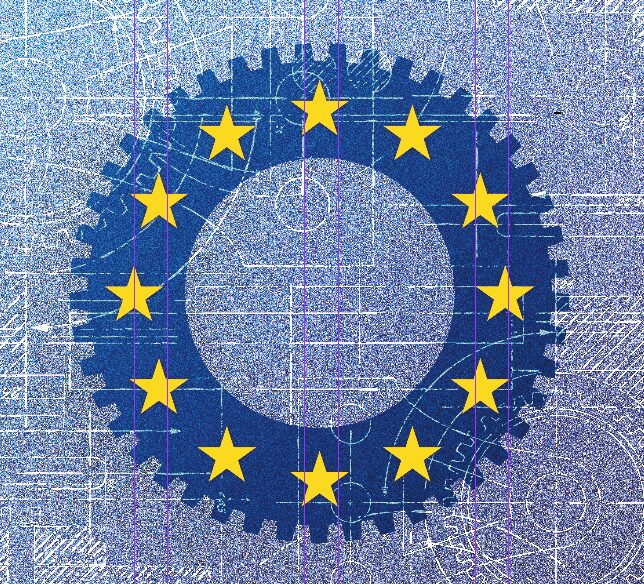
The Construction Products Regulation 2011 (CPR) harmonises performance information on construction products across the EU. It is made most visible by the mandatory CE marking of products and many of the products which are manufactured, specified and supplied in the ironmongery market fall within these standards.
The European Council adopted the revised Construction Products Regulation (CPR) in November 2024. This new version differs greatly from its predecessor. It continues to harmonise the EU rules for marketing of construction products and facilitates their free movement in the European single market. However, it also promotes the circular economy and technological development, enhances sustainability and digitalisation in the construction sector and actively promotes the reuse of materials.
CPR 101
Digital product passports (DPPs) will be introduced which will need to be available through the construction digital product passport system. This DPP will provide comprehensive and accessible information about products through their lifecycle in a digital format.
- The new regulation will combine the Declaration of Performance with the Declaration of Conformity into a singular Declaration of Performance and Conformity, simplifying the documentation processes for manufacturers.
- The content of the Declaration of Performance and Conformity, is to include the product’s environmental sustainability performance over its life cycle.
- The Declaration of Performance and Conformity is to be supplied by electronic means unless the declaration is included in a digital product passport
- The new regulation will also cover used products, key parts of products and parts or materials intended to be used for products.
- While the Construction Products Regulation (CPR) encompasses European Assessment Documents (EADs), the harmonised zone does not cover them. However, CE marking can still be obtained with EADs if they are cited in the Official Journal of the EU,
- Where the Commission considers a harmonised standard to be unsatisfactory, it may adopt an implementing act making it mandatory but with restrictions.
- A number of new rules and conditions for affixing CE marking will apply including:
– In the case of used products, the last two digits of the year when the product
was de-installed followed by the last two digits of the year in which the CE
marking was affixed on the used product.
– Some information can be replaced by a data carrier or permalink connected to
the declaration of performance and conformity when it is available on a website
- The CE marking may be subsequently followed by a pictogram or other mark indicating a special risk or use.
- There will be a number of new obligations for manufacturers, which include:
1. The manufacturer shall ensure that the product’s performance is assessed in relation to its essential characteristics laid down in harmonised European Standards (hENs) or European Assessment Documents plus any additional requirements set under delegated and implementing acts.
2. Manufacturers, where deemed appropriate, are to carry out sample testing of products to ensure the accuracy, reliability and stability of the declared performance and of the conformity of the product, investigate and if necessary keep a register of complaints of non-conforming products and product recalls and shall keep importers and distributors so informed.
3. Manufacturers using 3D-printing need to satisfy obligations incumbent on manufacturers when placing product on the market.
4. Where applicable, manufacturers must ensure availability of spare parts not commonly available in the market.
5. If a manufacturer considers or has reason to believe that a product they placed on the market is not in conformity with its declared performance or in compliance with the Regulation, they shall immediately take corrective measures to bring the product into conformity or withdraw or recall it.
UK Market impact
The existing UK Construction Product Regulation entitled “Construction Products (Amendment etc.) (EU Exit) Regulations 2020” is based upon the existing European CPR. Should the UK CPR continue to be used, or be replaced with a revised version then this would mean a divergence from the EU as both jurisdictions would have differing regulations.
To complicate matters further the original Northern Ireland Protocol (and now the Windsor Framework) gives Northern Ireland access to the EU single market through continuous alignment with relevant EU regulation (primarily on goods). There is therefore a potential for ‘internal divergence’ with the rest of the UK if the new European CPR is adopted in NI.
There also remains the issue of UKCA and CE marking in Great Britain. On 2 September 2024 the previously stated deadline of 30 June 2025 for CE marking recognition in Great Britain was revoked and once a new date has been published, a further two year co-existence period will also apply. This means that UKCA marking will not be mandatory until after CE marking has been removed in GB, therefore CE marking continues to be the only mandatory conformity marking for the entire UK market.
Further information on this topic is available to GAI members in the joint GAI CPA Technical Briefings on the European CPR and Digital Product Passports on
www.gai.org.uk/knowledge.
An online quiz based on this feature is available on the GAI Learning Hub. Completion of this quiz is worth one CPD point towards Registered Professional status. learninghub.gai.org.uk/totara/dashboard/index.php








